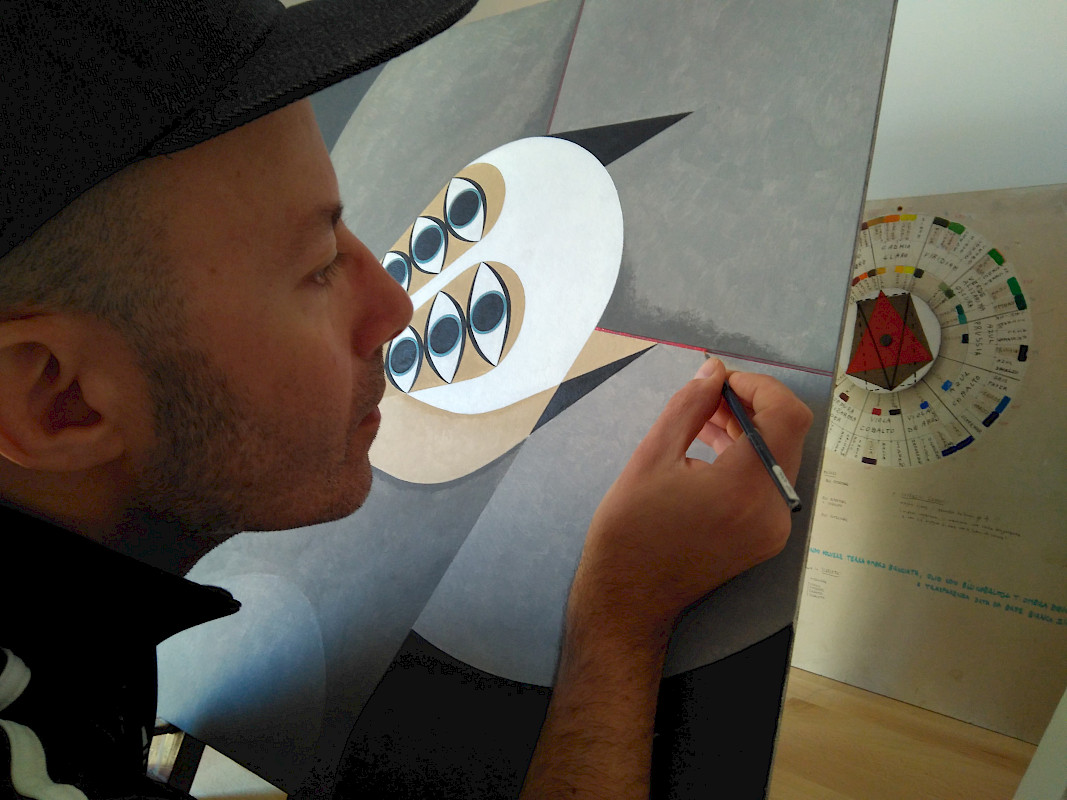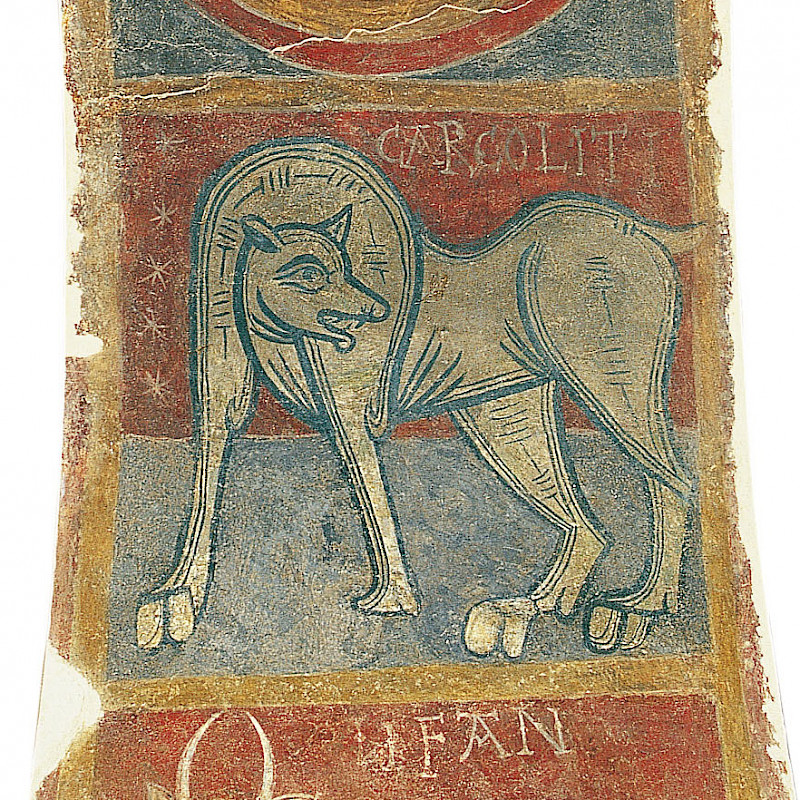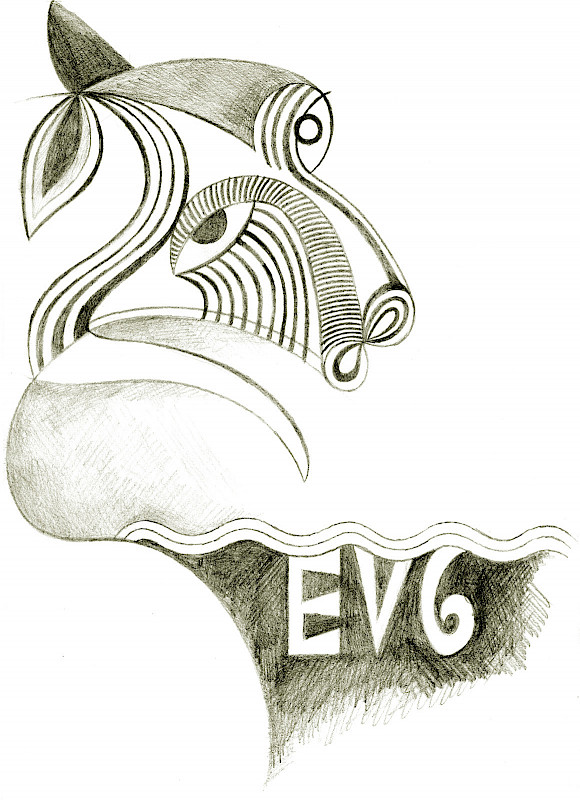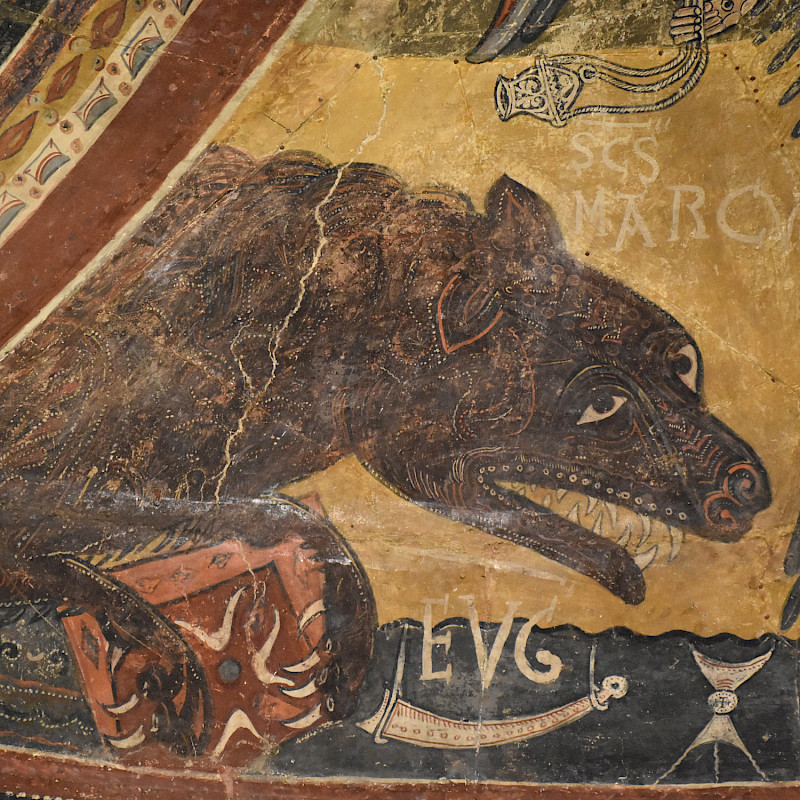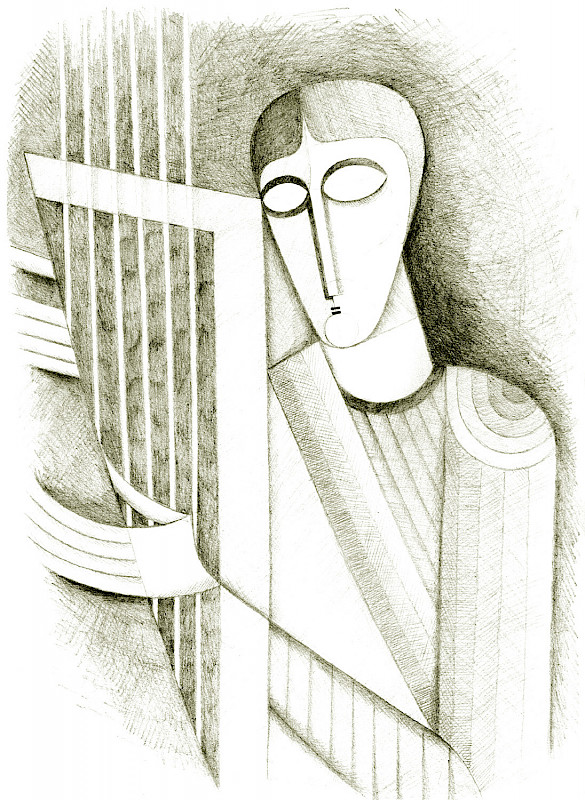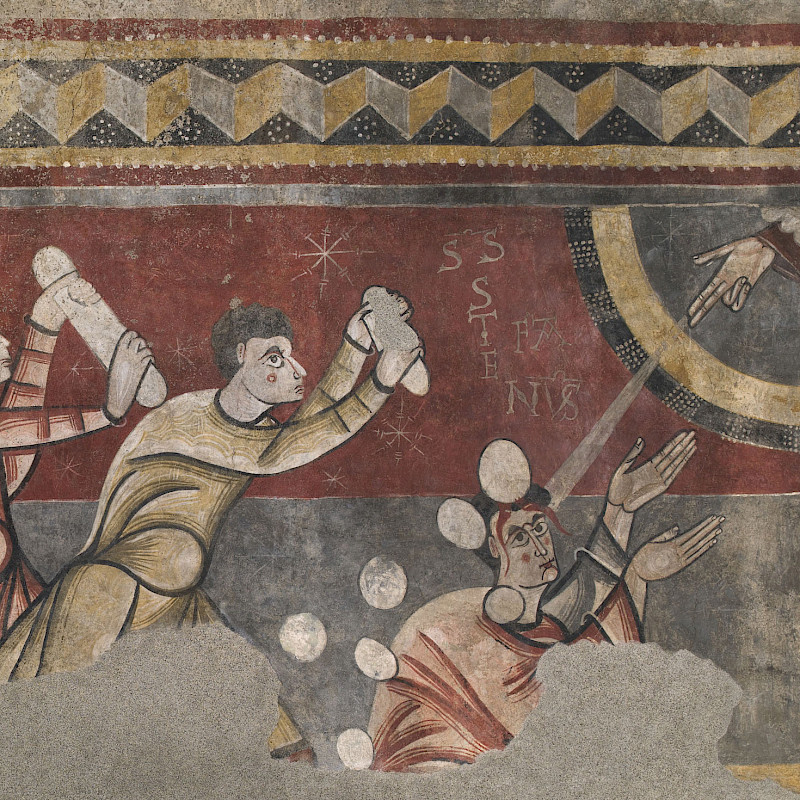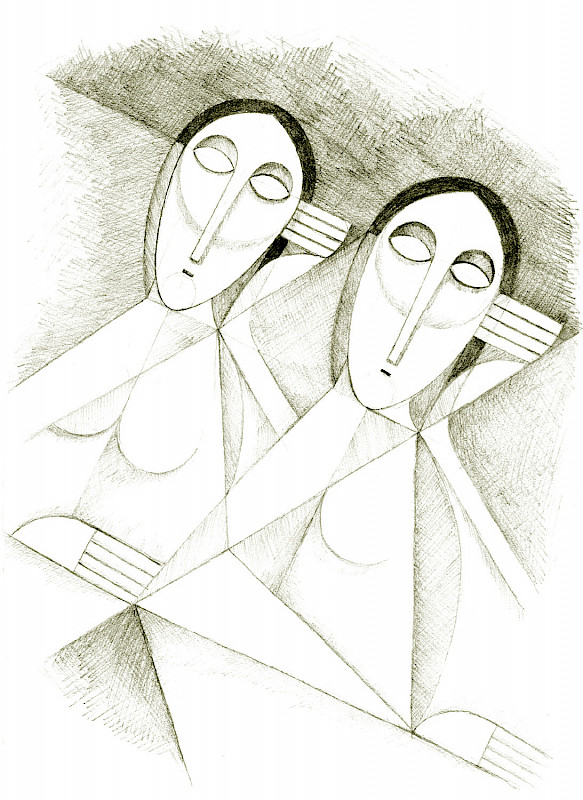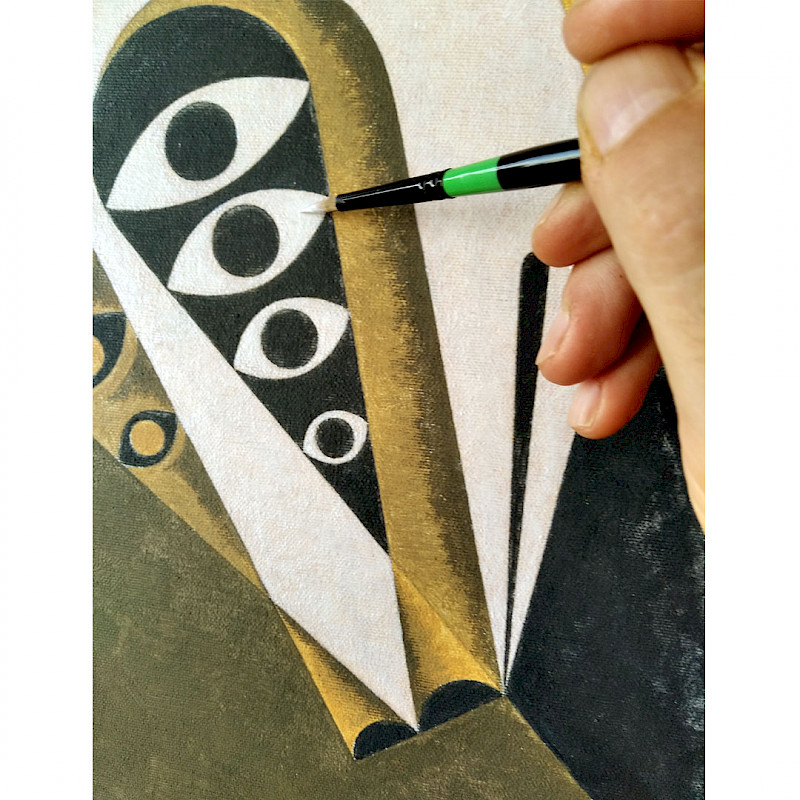A personal insight into Romanesque painting from Catalunya
The aim of this project has been a thorough study of Romanesque painting from Catalunya (wall-paintings and works on wooden boards), and the subsequent reinterpretation and reworking of the aforementioned art into new artwoks, reflecting my personal artistic sensitivity and using, as far as possible, the same techniques and materials employed back in the 12th and 13th centuries.
After visiting the National Museum of Catalan Art in Barcelona (MNAC), I realized that several elements of my own work shared common features with Catalan Romanesque painting aesthetics, and hence decided to devote himself to a project which would express the aforementioned links. Which are:
- My work is based on the same techniques and tools used in Catalan Romanesque painting. I apply a mixed painting technique (thin and oleoresin tempera) on a calcium caseinate ground. Egg yolk is the binder medium in this artistic process, exactly as it happens in Catalan altar frontals. This technique, applied on canvas mounted on pinewood board, combines the two most common kinds of painting present in Catalunya: “fresco” and egg-tempera on wooden panels.
Several of the materials I use are identical to the ones typical of the Romanesque tradition: natural powder pigments, casein, arabic gum, egg yolk, etc.
- Stylistically speaking, several aspects of my work resemble the ones typical of Catalan Romanesque painting and Romanesque painting in general: a tendency towards abstraction of the form and towards geometry; composition rules based on harmonic laws and regular modules; accent put on the figures’ outlines; a relatively limited choice of colors and a combination of contrasting, often complementary tones; ...
- I belong to a family with a long tradition in the art field, especially in the one linked to mural and “al fresco” painting. My father, Giancarlo Spozio, is an expert on mural painting techniques and in transferring fresco paintings on a new surface for their preservation (strappo technique.) It is well known that this is what Italian specialists did in Catalunya early last century, contributing to the creation of MNAC’s Romanesque painting collections.
The project’s stages:
- Direct study of Romanesque paintings in the MNAC collections and in other cultural institutions and areas of the Catalan territory, with the making of roughs and drawings based on the original models (November and December 2018)
- Subsequent reworking of the aforementioned drawings and creation of new, original artworks, directly inspired by the former (January 2019 - April 2020)
